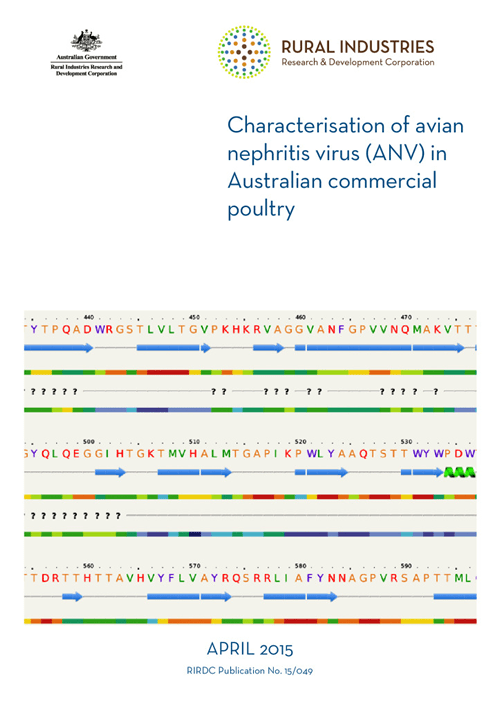ANV has been reported in poultry flocks worldwide and predominately causes disease in chickens less than two-weeks old. Older chickens appear to be less susceptible to the clinical manifestation of the disease (Gough and McNulty 2008). The first report of ANV was in 1979 in Japan (Yamaguchi, Imada et al. 1979) however little is known about the ANV in Australia since this virus was first detected in Australian poultry in 2010 (Hewson, O’Rourke et al. 2010). ANV infection can be clinical or subclinical. In the former type of infection, clinical signs may include diarrhoea, polyurea, dehydration, growth retardation and mortality. Some of these clinical manifestations can be difficult to distinguish from those induced by nephropathogenic strains of infectious bronchitis viruses (Cumming 1999; Ignjatovic, Ashton et al. 2002). There are currently no effective treatment or control strategies for ANV infection. Complete cleanout of the shed between flocks may assist but, given that the virus is suspected to shed vertically, does not totally prevent the infection. To date no vaccine has been developed for ANV.
This information will aid all Australian poultry producers, specifically those growing young chicks (< two week old). The diagnostic tools developed in this investigation will assist farmers, producers, poultry veterinarians and vaccine manufacturers to monitor ANV infections/contamination and estimate its impact on production of poultry, and potentially the development of vaccines.





